nara park
Nara Park Is Experiencing a Boom in its Deer Population
Karina Ikedo
Posted on September 29, 2025
Share:
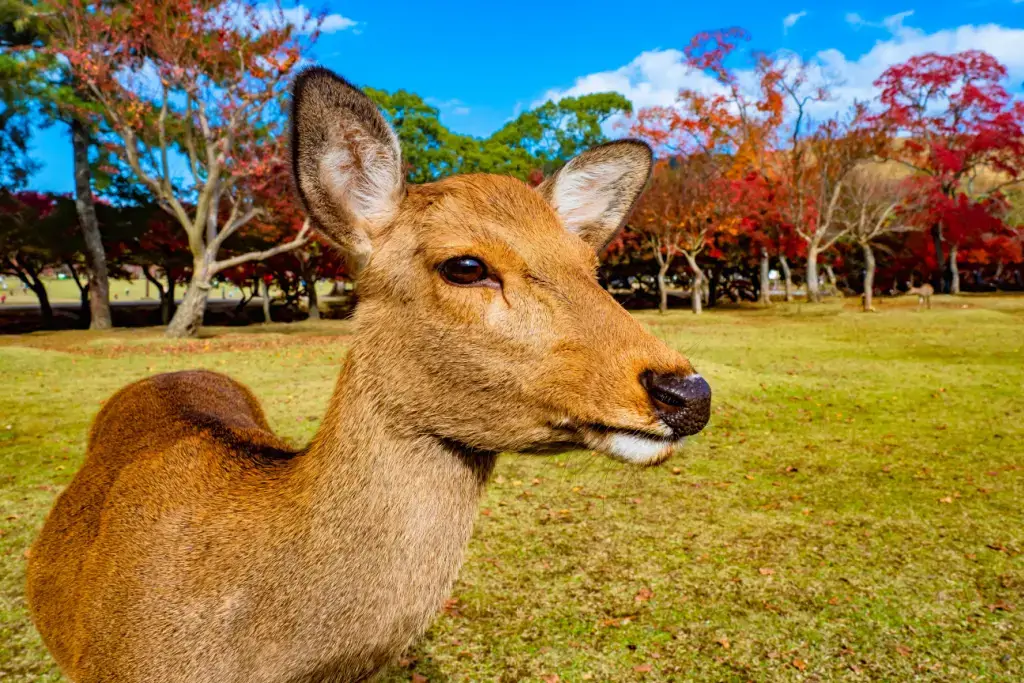
If you’ve ever walked through Nara Park, you probably remember one thing most: the deer. These gentle animals, with curious eyes and playful bows for senbei (rice crackers), are the city’s most famous residents. They may look like the perfect sign of harmony between people and animals, but the truth is more complex.
According to the Nara Deer Preservation Foundation, the deer population at Nara Park reached a record 1,465 in 2025. This is the most significant number since surveys began in 1953, showing strong protection and new problems for the city. Keep reading to learn how this rising population affects Nara, its people, and the deer.
The Sacred Deer of Nara
The deer (Cervus nippon) of Nara have deep cultural and religious meaning. In Shinto (Japan’s native religion), deer are seen as messengers of the gods. This belief has protected them for centuries, earning them the title of a national natural monument in Japan.
Because of this sacred status, harming or capturing the deer is against the law. Nara Park, home to many of Japan’s oldest temples and shrines, is equally famous for its free-roaming deer. Tourists worldwide visit to feed them special crackers and take photos. In many ways, the deer are just as symbolic of Nara as Todaiji Temple or the Great Buddha.
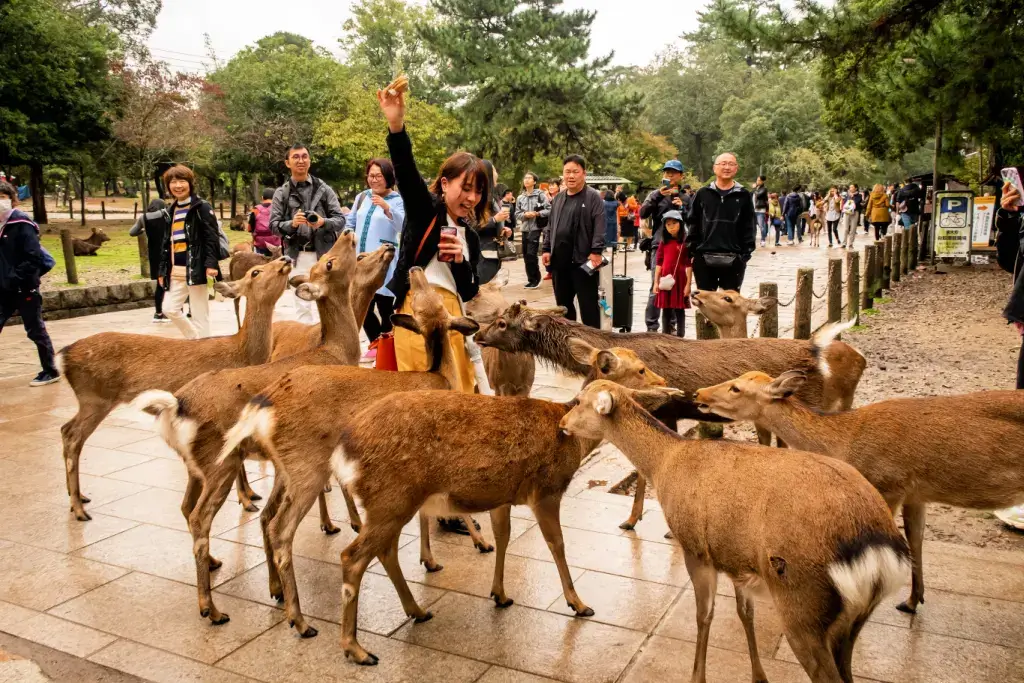
Why are deer numbers rising?
The growing deer population results from decades of protection and careful management. With plenty of food, natural plants, and tourist snacks, the deer have thrived. A recent survey counted 315 bucks, 816 does, and 334 fawns, showing a substantial breeding population. At first, this might sound like a great conservation success. It proves that Nara’s cultural heritage is alive and well. However, a closer look shows that new problems are starting to appear.
Are you looking for a taste of authentic Japan at home? Then check out Sakuraco! Sakuraco delivers traditional Japanese snacks, sweets, teas, and more from local Japanese makers right to your door!
What are the challenges of too many deer?
Accidents and Injuries
Between July 2024 and June 2025, 140 deer deaths were recorded, many from traffic accidents. Busy roads cut through or run alongside Nara Park, making collisions sadly common. At the same time, more tourists report bites and nibbles as deer grow bolder when searching for food.
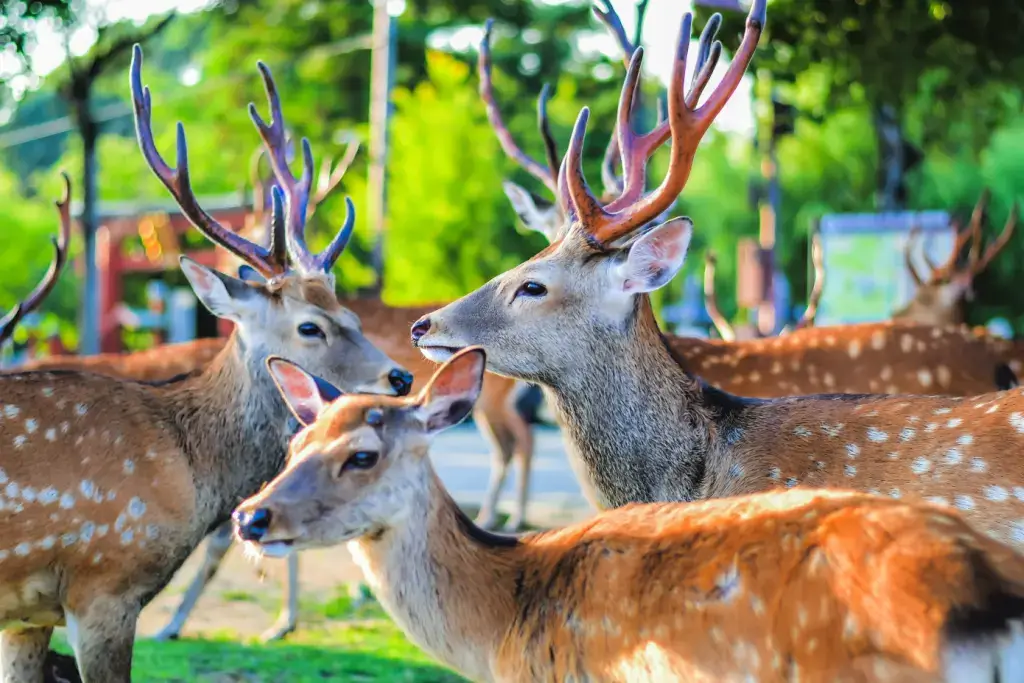
Deer on the Move
Recently, deer have been seen outside their usual area, grazing near government buildings like the Nara Prefectural Office. Some have even wandered near neighborhoods and crossed busy roads, including National Route 369. A few deer have traveled more than a kilometer from the park for food.
Impact on Agriculture
Officials say more deer does not always mean more crop damage, but farmers are still concerned. In 2023, there were 25 reports of farmland damage, and in 2024, there were 15 cases. Farmers near Shin-Omiya Station worry the larger herd may soon move deeper into their fields.
Protecting Both People and Deer
Authorities face a tricky challenge. They must respect the deer’s sacred status while protecting people and animals. Culling, which means reducing the population by hunting or capture, was considered but rejected last year.
Instead, efforts focus on new strategies. Barriers are built to keep deer away from busy roads and farmland. Tourists are reminded not to overfeed deer or encourage aggressive behavior. Experts regularly count the deer and track their health conditions closely. Even with these steps, finding long-term solutions remains difficult.
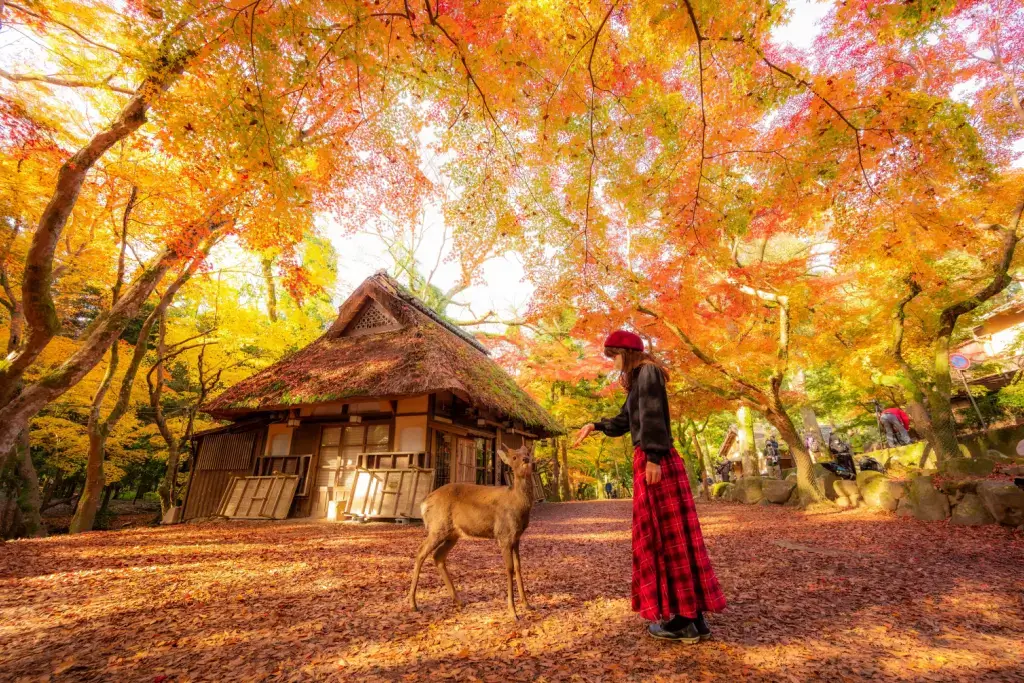
Tourism and Responsibility
For many visitors, the deer of Nara Park are unforgettable. Watching a deer bow before taking a cracker feels special. However, the growing deer population means tourists must be extra careful. Visitors are encouraged to feed only shika senbei (deer crackers). Other foods can harm deer’s health and cause problems. Tourists should also avoid teasing or overfeeding deer, which can make them aggressive.
People must also be cautious around fawns and bucks during mating or birthing seasons, as deer can act unpredictably at those times. Tourism is essential for Nara’s economy. Still, the safety of both deer and people depends on respectful behavior.
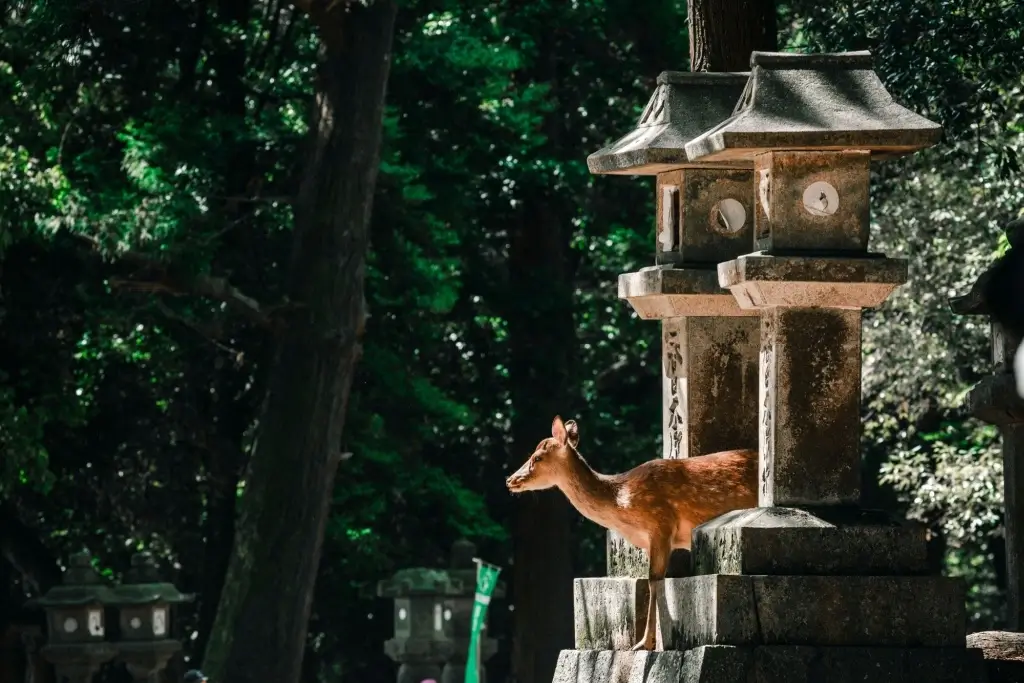
Preserving Harmony for the Future
The growing deer population in Nara Park is both exciting and challenging. Centuries of protection and cultural respect have kept the herd strong. At the same time, the city faces new problems. Traffic safety, crop protection, and close human contact are significant concerns.
Fences, surveys, and education programs help, but challenges remain. Culling was considered but rejected because of the deer’s sacred status. Instead, Nara uses management, monitoring, and teamwork with locals and officials.
Why Nara’s Deer Still Matter Today
People care because Nara’s deer are more than animals; they connect ancient traditions with modern life. In Shinto belief, deer are messengers of the gods. For locals, the deer are national treasures. For tourists, they are unforgettable companions that make Nara unique. Today, the deer still roam temples, shrines, and city streets.
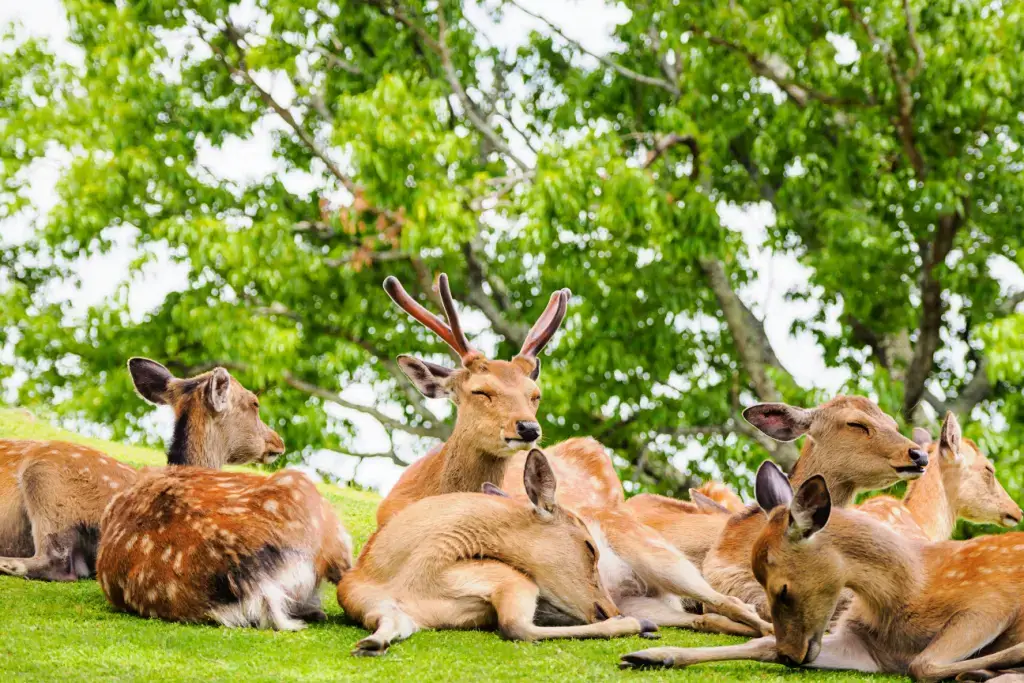
They continue their role as sacred messengers and cultural icons. Their future depends on teamwork between conservation groups, officials, farmers, and visitors. Have you ever visited Nara Park and interacted with its deer? What is the best way to balance tradition and safety as the deer population grows? Let us know in the comments below!

Discover authentic flavors with Sakuraco
Get Sakuraco 

Discover authentic flavors with Sakuraco
Get Sakuraco 
Related Articles
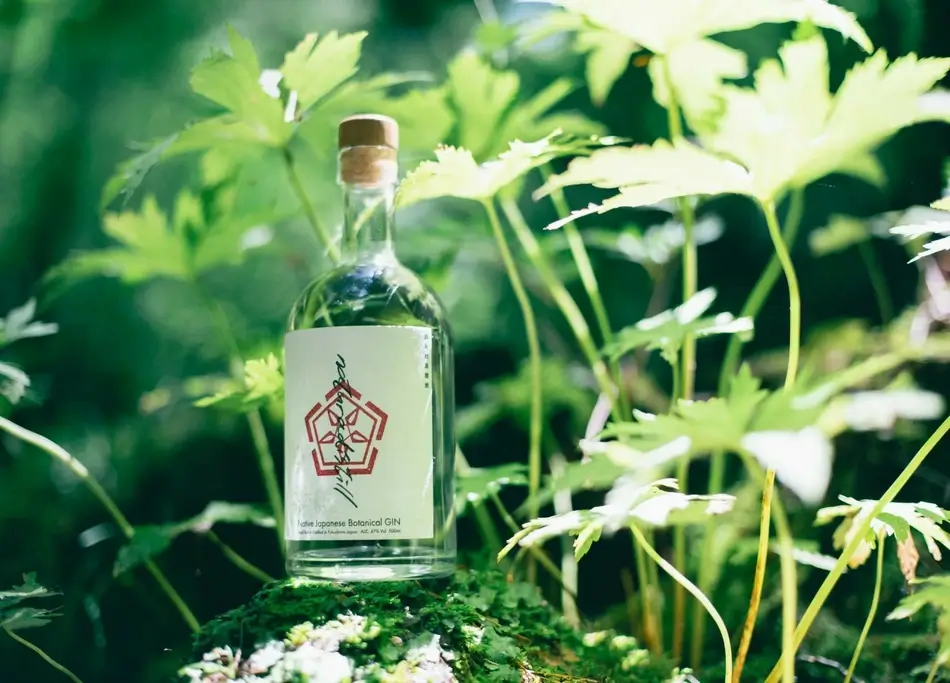
Japanese Gin: How a New Distillery Is Redefining Craft Spirits
Japanese gin has gained popularity due to the use of local ingredients and meticulous production methods by many distilleries. A new gin from Fukushima is adding momentum to this trend by focusing on the region’s water and native plants.
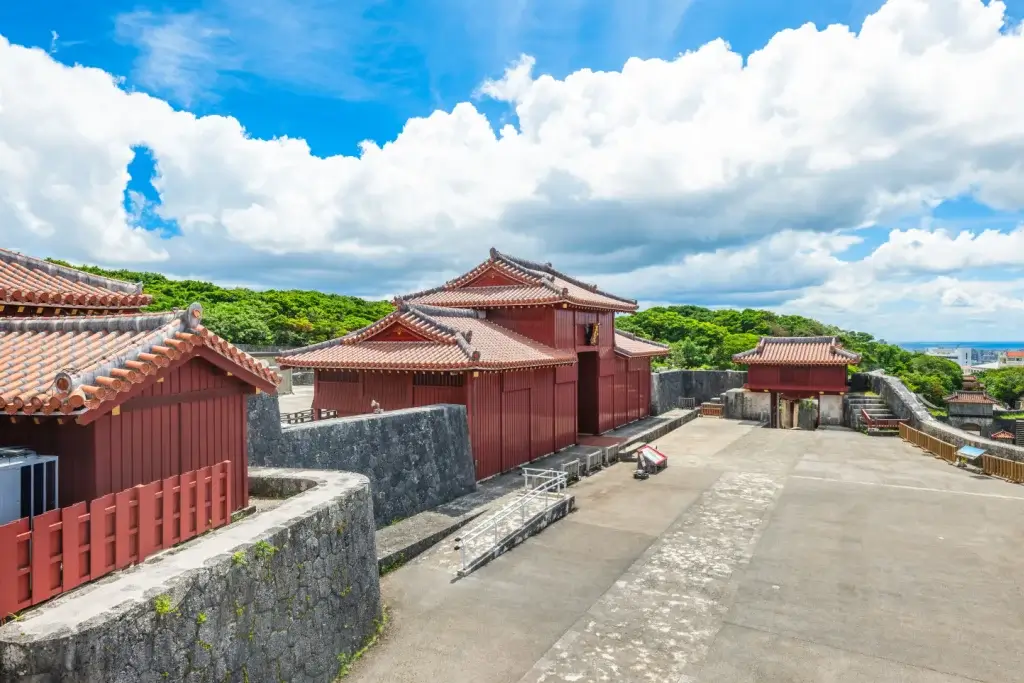
Shuri Castle Receives Partial Restoration in 2025
Shuri Castle, an iconic symbol of Okinawa’s Ryukyu Kingdom heritage, has long captivated the hearts of both locals and visitors. Located in the vibrant city of Naha, Okinawa, the castle’s bright vermilion walls and graceful architecture tell the story of a unique kingdom that flourished independently for centuries.
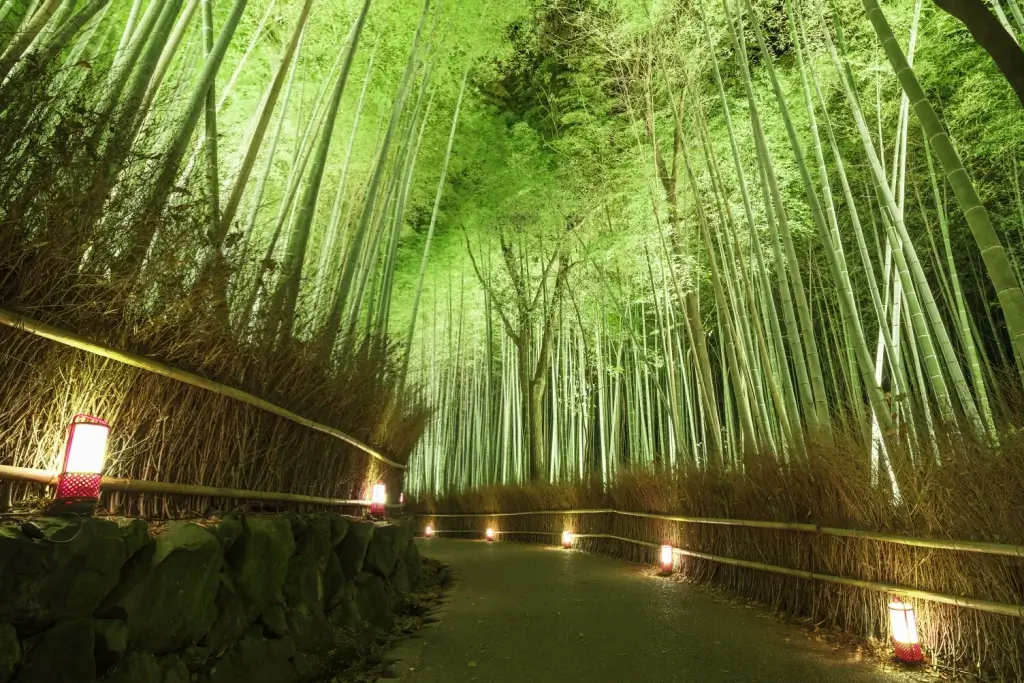
Kyoto Bamboo Forest Light Show: Illuminating Tradition and Nature
Every autumn, Kyoto’s Arashiyama Bamboo Grove (also known as the “Kyoto Bamboo Forest”) has mesmerized visitors with its mysterious charm and soothing atmosphere. The bamboo light show has returned in 2025 after a four-year break caused by the pandemic.
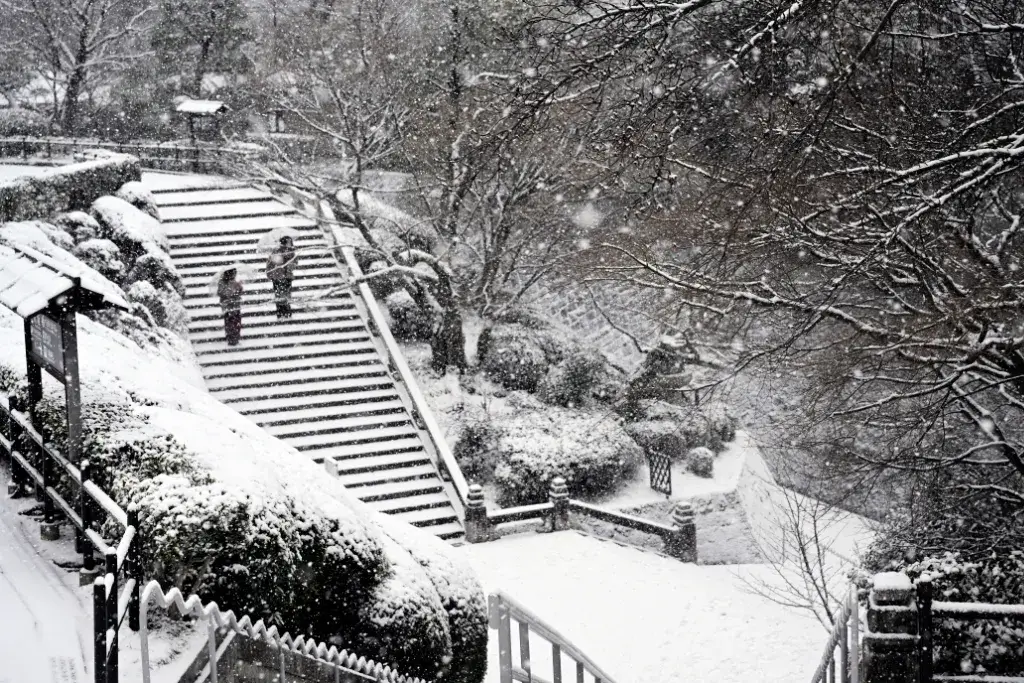
Japan Winter Came Too Early: Should We Be Worried?
Typically, late November brings cool days, with dipping temperatures around 10 to 15°C (50–59°F) in many regions. This year, though, things feel different. Because of these changes, many people are asking: Did Japan’s winter really arrive too soon?



